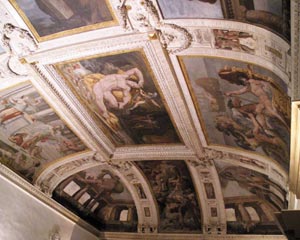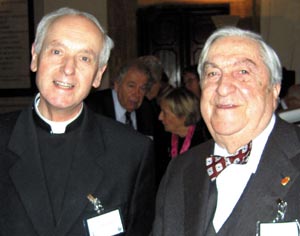A recent one-day meeting in Bologna looked back on the era of the bubble chamber, and recalled its technical achievements and main discoveries, as well as the sociology behind its development.

The bubble chamber, which was invented by Donald Glaser in 1952, made its major contributions to particle physics over three decades, from the late 1950s until the 1980s. This period saw chambers of increasing size, particle beams of increasing energy, more and more automatic measuring machines, and increasingly powerful computers. The initial era was pioneered by groups in the US, in particular the Alvarez group at the Lawrence Berkeley Laboratory. Later, major contributions came from European groups, with CERN playing a central role. In Italy the bubble-chamber technique provided the opportunity to revitalize the field of particle physics, bringing together a large number of physicists from many Italian universities. This was coordinated by INFN, which also created a national centre called the Centro Nazionale Analisi Fotogrammi (CNAF) in Bologna.

It was against this background that the Bologna Academy of Sciences organized a meeting on 18 March entitled “30 years of bubble chamber physics”. Around 100 physicists from 28 different institutions attended the meeting, which was sponsored by the Bologna Academy of Sciences, the University of Bologna and the Department of Physics, and the INFN (CNAF and Sezione di Bologna). The programme included talks on the beginning of bubble chambers, the first instruments and the first results, the impact of bubble chambers on particle physics, and hydrogen, helium and heavy-liquid bubble chambers.
The early bubble chambers were very small, but over the years they increased in size by a factor of around one million, with the largest chambers containing 40 m3 of liquid. More than 100 bubble chambers were built throughout the world, and more than 100 million stereo pictures were taken. The 80 cm Saclay bubble chamber at CERN, the 2 m CERN bubble chamber and the Big European Bubble Chamber (BEBC) took more than half of these pictures.

The sociology of bubble-chamber collaborations is an interesting one. In the initial period, many small chambers took pictures that were analysed by in-house groups. Later, bigger bubble chambers were built and run by experts in large laboratories using refined beams at accelerators of increasing energy. These chambers were considered facilities that could be used by internal and external groups, and this increased the number of international collaborations, with several groups from different countries and around 20-50 physicists per experiment. The role of large laboratories like CERN was always a central one.
One of the earliest bubble-chamber papers, “Demonstration of parity non conservation in hyperon decay”, which was published in 1957, was signed by physicists from four teams: the Columbia- BNL team that was headed by Jack Steinberger, the Bologna team headed by Giampietro Puppi, the Pisa team headed by the late Marcello Conversi and the Michigan team led by Donald Glaser (F Eisler et al. 1957).

It is worth recalling that in the beginning every team had to scan and measure bubble-chamber photographs with very primitive equipment. Eventually, digitized tables were made and one started to hear of “Mangiaspagos” in Italy, of more elaborate semiautomated or fully automated “Frankensteins” and “PEPRs” in the US, and of “MYLADYs” and “HPDs” in Europe. A large number of scanners was needed to cope with the increasing number of photographs, making measurements and pre-measurements more precise.
Computer technology grew in parallel with the increase in size and automation of the bubble chambers. At the beginning of the bubble-chamber era, slide rules and electromechanical calculators were used. But soon the IBM650 computer began to be used, and this was followed by even more powerful machines. Similarly, the measured co-ordinates of points along the tracks were initially punched onto cards manually, but then semiautomatic projectors took over this task. The installation of mainframe computing capacity was driven by the demands of bubble-chamber physics. For example, the CERN mainframe central computers increased their speed and capacity by a factor of more than 1000 during the bubble-chamber era.
The meeting also reviewed several areas of physics where bubble chambers have had an impact, for example, parity violation in hyperon decay, the weak neutral current, baryon resonances, charm particles and multihadronic production. In the round-table discussion on “The legacy of 30 years of bubble chamber physics”, several participants completed the overall view of the field, with an emphasis on topics such as the neutrino field and some of the special bubble chambers.

The main scientific legacy of the bubble chamber towards our understanding of the microworld of particle physics forms an impressive list that includes: strange particles, such as the omega-minus; meson and hadron resonances, leading to the hadron spectrum, SU(3) and constituent quarks; neutral weak currents and electroweak unification; and scaling in neutrino-nucleon deep inelastic scattering, leading to partons and therefore to dynamical quarks (“Bubbles 40” 1994).
The final session at the meeting dealt with particle physics and society, and with the popularization of science. In this respect, selected bubble-chamber pictures can provide a global and intuitive view of particle-physics phenomena. They allow an untutored audience to realize that our field is based on simple and intelligible experimental facts. A large number of photographs of bubble-chamber events was on show to participants as part of a small historical exhibit, which included an early propane chamber that was built in Padova in 1955, early instruments and the central part of a Mangiaspago measuring projector.
Further reading
For more information about the meeting, see the website at: www.bo.infn.it/~spurio/bubble.htm.
F Eisler et al. 1957 Phys. Rev. 108 1353.
“Bubbles 40″1994 Nuclear Phys. B (Proc. Suppl.) 36.





